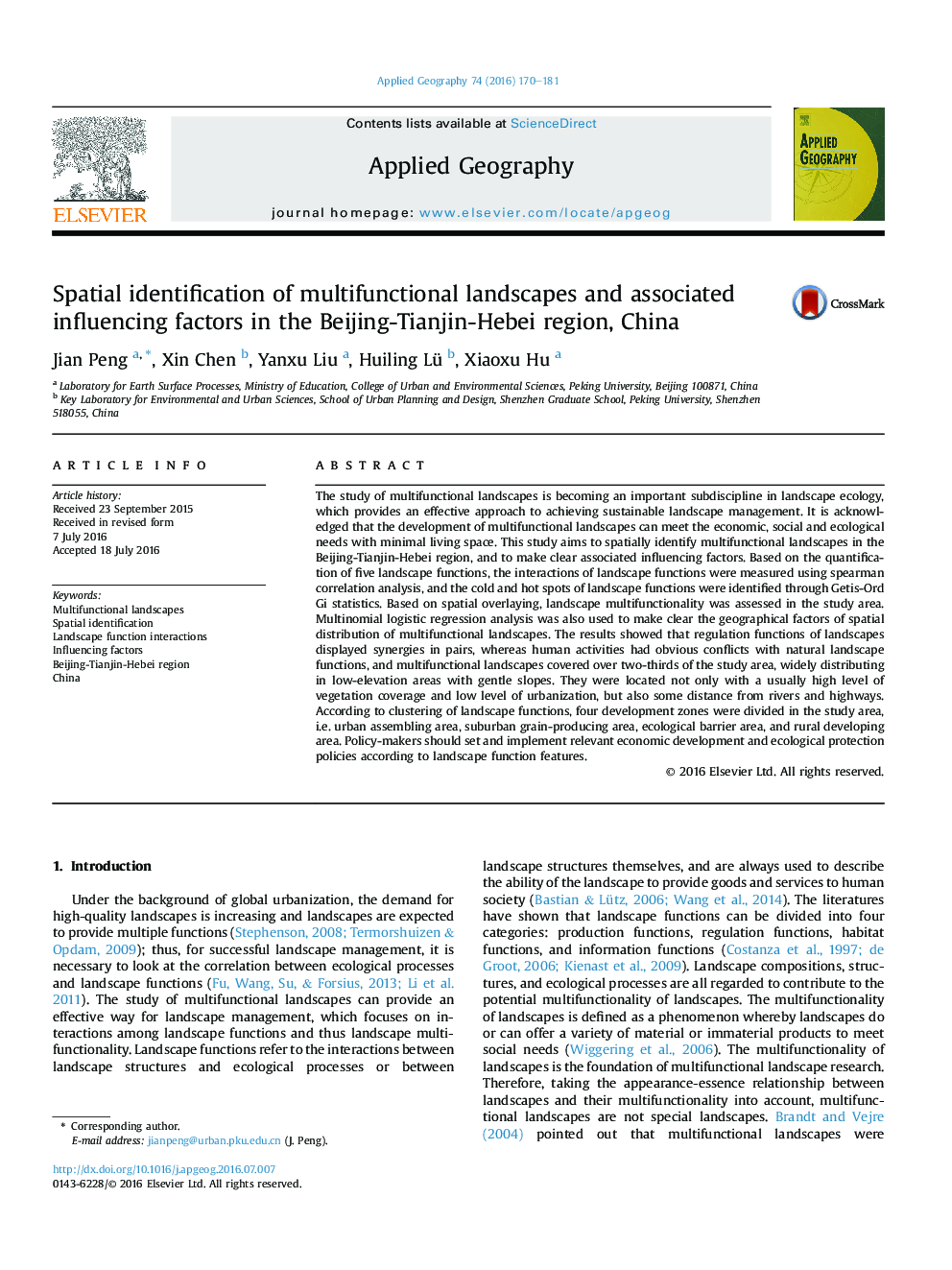| کد مقاله | کد نشریه | سال انتشار | مقاله انگلیسی | نسخه تمام متن |
|---|---|---|---|---|
| 83123 | 158687 | 2016 | 12 صفحه PDF | دانلود رایگان |
• Five landscape functions and their interactions were quantified.
• Multifunctional landscapes were identified through spatial overlaying.
• Influencing factors were analyzed using multinomial logistic regression.
• County-level development zoning was conducted in the Beijing-Tianjin-Hebei Region.
The study of multifunctional landscapes is becoming an important subdiscipline in landscape ecology, which provides an effective approach to achieving sustainable landscape management. It is acknowledged that the development of multifunctional landscapes can meet the economic, social and ecological needs with minimal living space. This study aims to spatially identify multifunctional landscapes in the Beijing-Tianjin-Hebei region, and to make clear associated influencing factors. Based on the quantification of five landscape functions, the interactions of landscape functions were measured using spearman correlation analysis, and the cold and hot spots of landscape functions were identified through Getis-Ord Gi statistics. Based on spatial overlaying, landscape multifunctionality was assessed in the study area. Multinomial logistic regression analysis was also used to make clear the geographical factors of spatial distribution of multifunctional landscapes. The results showed that regulation functions of landscapes displayed synergies in pairs, whereas human activities had obvious conflicts with natural landscape functions, and multifunctional landscapes covered over two-thirds of the study area, widely distributing in low-elevation areas with gentle slopes. They were located not only with a usually high level of vegetation coverage and low level of urbanization, but also some distance from rivers and highways. According to clustering of landscape functions, four development zones were divided in the study area, i.e. urban assembling area, suburban grain-producing area, ecological barrier area, and rural developing area. Policy-makers should set and implement relevant economic development and ecological protection policies according to landscape function features.
Journal: Applied Geography - Volume 74, September 2016, Pages 170–181
